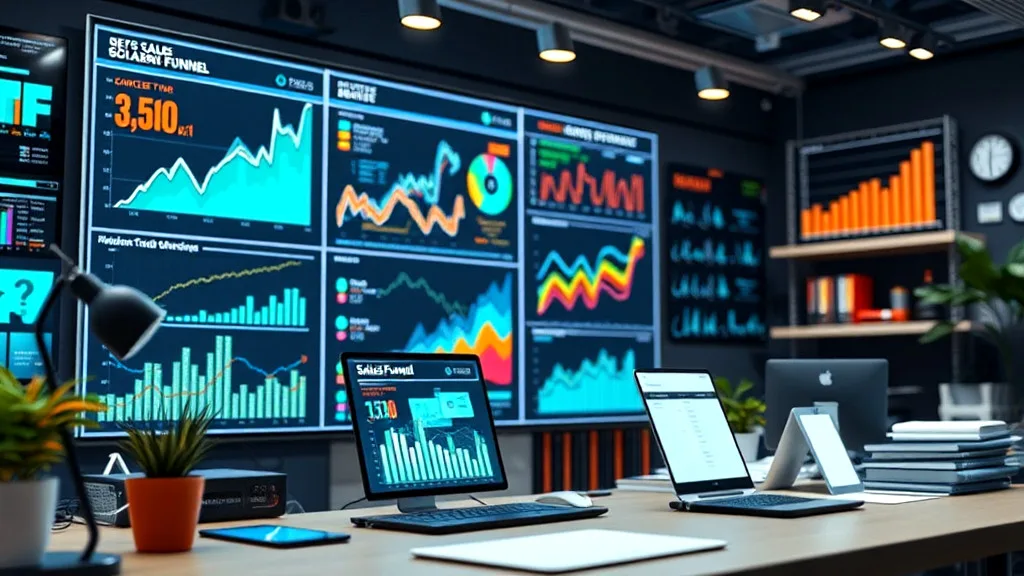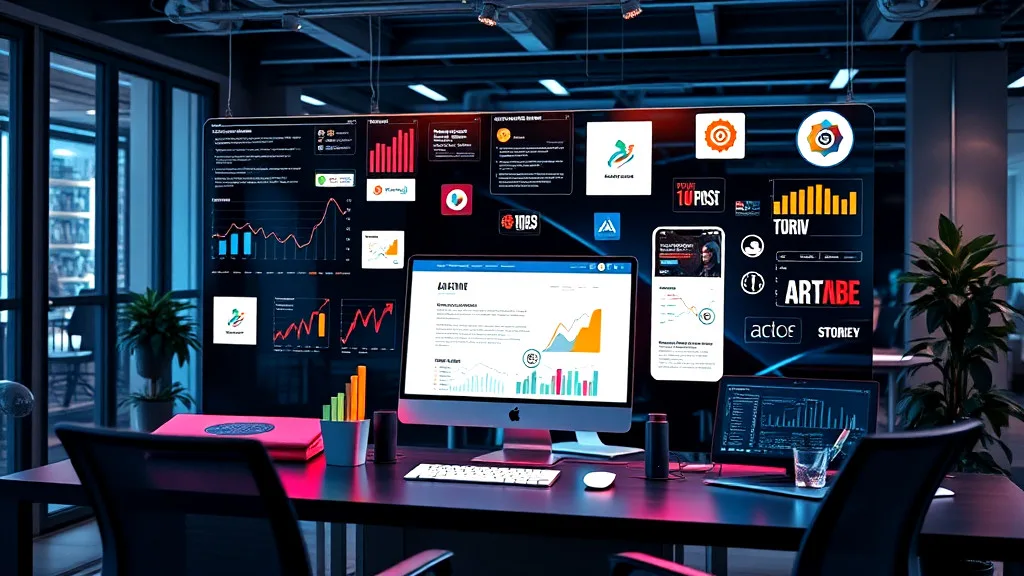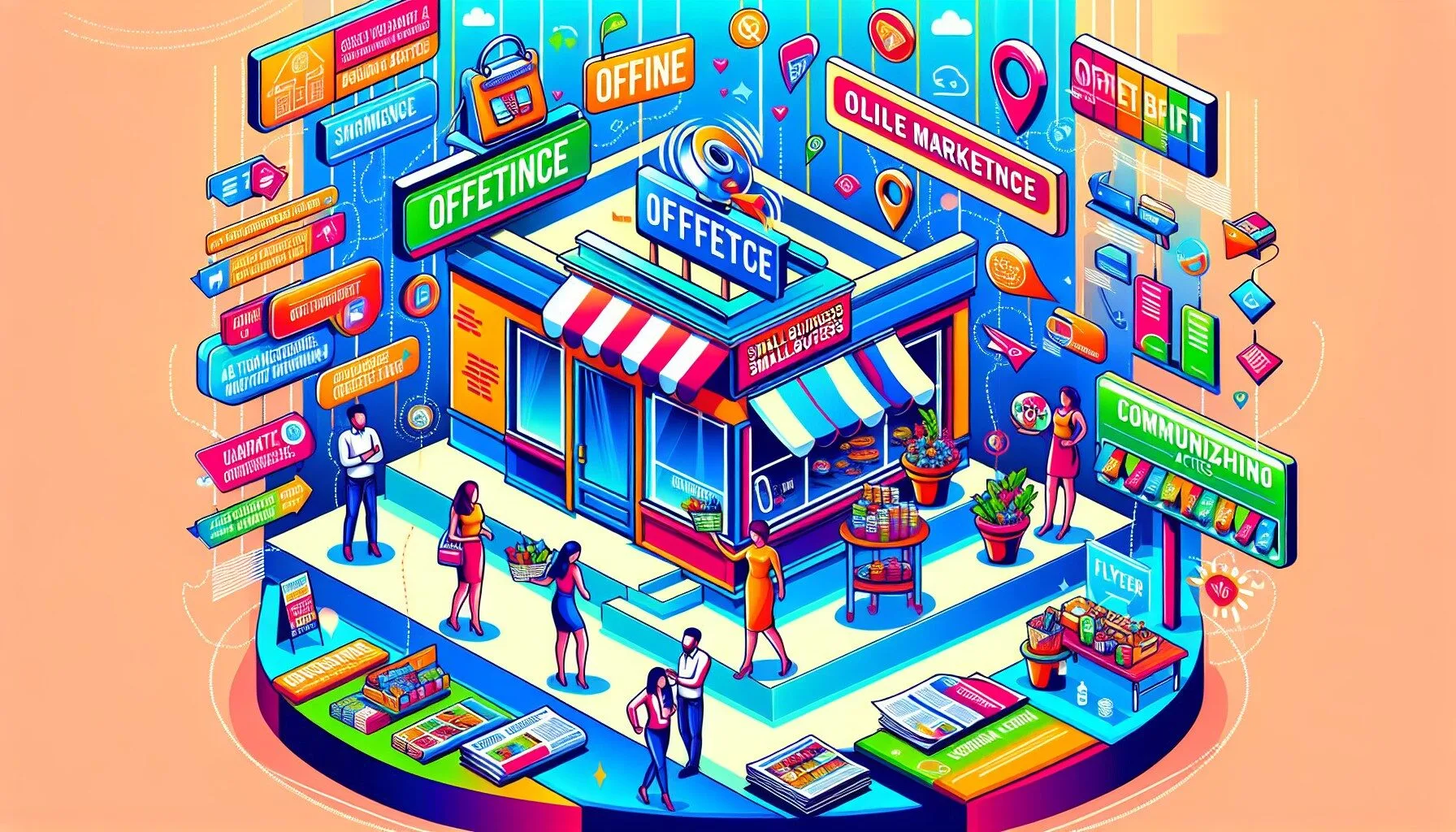Understanding the Sales Funnel Process
Exploring the sales funnel process reveals how crucial it is to track sales funnel stats. Many companies miss out on valuable insights by not measuring these statistics. This oversight affects their ability to create a good sales funnel.
We see that a well-defined sales funnel can significantly improve a company’s performance. For instance, focusing on conversion rates, an average conversion rate of 3.1% to 5% is considered effective.
Incorporating strategic email marketing and lead nurturing techniques can help boost results. Simple tweaks in sales funnel stages can lead to better funnel conversion rates, ultimately enhancing business success.

Importance of Sales Funnel Statistics
Understanding the role of sales funnel stats is like having a roadmap in business. Without them, we’re stumbling in the dark, missing out on potential gains. They show us where leads drop off, helping us tweak our approach.
Imagine boosting a conversion rate with just a small change! That’s the power of a well-defined sales funnel process. It’s like finding the secret sauce to a recipe.
We avoid wasting resources on ineffective strategies, letting us focus on what truly matters: nurturing leads and closing deals.

The Role of Sales Funnel Stages
Considering the different stages within a sales funnel, each step plays its own part. At the top, we attract potential leads. Engaging them happens in the middle, while the bottom is all about conversion.
These stages, impacted by sales funnel stats, guide us in adjusting strategies for better results. A well-executed sales funnel conversion can make a difference with a good sales funnel achieving an average conversion rate.
Changes in these stages can transform leads into loyal customers, proving the effectiveness of a structured, well-defined process.

Top-of-Funnel Challenges and Solutions
Addressing top-of-funnel hurdles often feels like taming wild horses. We’ve seen that sales funnel statistics show a whopping 96% of visitors aren’t ready to purchase.
This means we’re juggling a lot of window shoppers!
Offering rich content can reel them in, like fishing with tasty bait.
Our secret weapon?
A captivating landing page that makes them want to stick around. With these strategies, the sales funnel conversion becomes more effective, making those elusive visitors more likely to become loyal customers.
Middle-of-Funnel Engagement Tactics
Delving into middle-of-funnel strategies, we find that personalized content truly shines. It boosts engagement by up to 20%, dramatically enhancing the conversion rate.
Crafting tailored experiences keeps potential customers hooked. By analyzing sales funnel statistics, we spot where prospects linger and tweak our approach. Email marketing, with its personal touch, nurtures leads further.
It’s like building a bridge over a river of indecision. Just as a reminder, effective strategies increase retention by 36%. As we navigate these strategies, Mashable emphasizes that timing and personalization are key.
Bottom-of-Funnel Conversion Strategies
Transforming leads into loyal clients calls for pinpoint strategies at the funnel’s base. Sales funnel statistics illuminate the importance of upselling and renewals, where a lion’s share of revenue originates.
Imagine simplifying the buying process—it’s like paving a smooth path for potential buyers. This simplicity elevates the conversion rate, making it soar by 62%.
Streamlined processes aren’t just efficient; they’re profitable. Applying these tactics bolsters our sales funnel process, turning prospects into enthusiastic customers.
Analyzing Sales Funnel Conversion Rates
Peering into funnel conversion rates reveals much about our strategy’s effectiveness. It’s like checking a car’s fuel gauge before a road trip.
A streamlined sales funnel process can transform a trickle of leads into a torrent of sales. But, a complex form? Like asking someone to solve a Rubik’s cube blindfolded!
Trimming form fields keeps it simple and inviting. And remember, nurturing through email marketing builds bridges with potential customers. WordStream’s insights reveal that clear calls-to-action are game changers for better rates.

Average Conversion Rate Benchmarks
Examining benchmarks for conversion rates in sales funnels reveals interesting trends.
A standout statistic is that pages with just one call-to-action often outperform those with many. It’s like offering one clear path instead of a maze.
Interestingly, our experiences show that clarity and simplicity in a well-defined sales funnel stage can yield impressive results. This aligns with insights from LinkedIn’s research, highlighting how industry-specific strategies play a role.
In essence, understanding these sales funnel statistics can lead to improved outcomes in nurturing potential leads and boosting overall conversion rates.
Lead Nurturing for Better Funnel Performance
Nurturing leads within a funnel feels like tending a garden. Sales funnel statistics tell us nurtured leads make 47% larger purchases.
We can use automation to water these leads regularly, keeping them fresh and engaged. It’s like having a green thumb for sales!
CRM tools help manage our garden, ensuring no lead wilts away.
With a well-defined sales funnel stage, we guide leads smoothly through the funnel. This boosts our average conversion rate, helping us achieve better results.

Nurtured vs. Non-Nurtured Leads
Exploring the debate between nurtured and non-nurtured leads unveils fascinating insights.
Businesses ignoring lead nurturing might as well be leaving money on the table. With nurtured leads making 47% larger purchases, it’s like hitting the jackpot.
Conversely, ignoring this approach risks 79% of leads never seeing the light of day. It’s a game-changing strategy.
According to the Harvard Business Review, 84% of B2B sales begin with referrals, underscoring the importance of a well-defined sales funnel process.
So let’s not overlook the boost nurturing provides in improving our average conversion rate.
Effective Lead Nurturing Techniques
Techniques for nurturing leads are essential for improving our sales stats.
Using automation software can help us streamline this process, making it as smooth as a well-oiled machine. Think of it as having a personal assistant who never takes a day off.
This approach, combined with a smartly designed CRM system, ensures no lead slips through the cracks.
In fact, 57% of marketers value automation in lead nurturing, as seen in research by MarketingExperiments here. Such tools make nurturing more effective, boosting overall funnel performance.
Tools for Lead Nurturing Success
Crafting success in nurturing leads often involves deploying the right digital tools.
Implementing CRM systems can significantly enhance our lead management, ensuring that no potential sale slips through the cracks.
These tools allow us to streamline the process, making it as smooth as a freshly paved road. We could also integrate email marketing to keep our audience engaged.
This approach isn’t just about easier management; it’s about improving our average conversion rate. Ultimately, these strategies contribute to a more effective, well-defined funnel.
Optimizing Sales Funnel Elements
Landing page tweaks offer sevenfold lead boosts. Adding videos can skyrocket conversions by 86%.
A crystal-clear call-to-action? Think of it as a beacon guiding ships safely to shore.
Testing and targeting? It’s like a treasure hunt where every clue leads to a bigger prize.
Nail this, and you might see conversions soar by 300%!
Tools like CRM systems and email marketing are our trusty allies, keeping everything on track. With these in our toolkit, our average conversion rate can thrive. Let’s make those numbers sing!

Importance of Landing Page Design
The design of our landing pages is like the key to unlocking potential.
Imagine a door that opens to higher engagement and conversions.
Fewer form fields can also make a big difference. Less is more here; simplicity wins.
As we refine our efforts, let’s peek at Outreach for insights. Their sales funnel stats might just offer the competitive edge we need.
The Role of Calls-to-Action
Having a clear call-to-action is like a lighthouse guiding ships to the shore. It turns visitors into customers by showing them exactly what to do next.
Pages with a single call-to-action often see higher conversions, a direct impact on our funnel conversion rate.
By simplifying choices, we increase effectiveness. Our sales funnel stage benefits from targeted, action-driven prompts.
Want to see results?
Pair clear instructions with appealing design. The right call-to-action can be the secret sauce that boosts our average conversion rate beyond expectations.
Testing and Targeting for Improvement
Improving our methods hinges on proper targeting and relentless testing.
Imagine our strategy as a detective solving a mystery, each clue leading to stronger results.
By refining how we target, conversions can shoot up by 300%!
Let’s focus on a well-defined sales funnel. This approach helps us understand our audience better and tailor strategies that resonate.
Through precise targeting, our efforts become more like a finely tuned instrument. The harmony between our tactics and audience is the key to unlocking success.
Industry Variations in Sales Funnels
Examining how different sectors approach conversion reveals intriguing insights.
B2B firms often face lengthy decision cycles, requiring us to engage multiple stakeholders. Meanwhile, e-commerce thrives on quick decisions, spurred by user-generated content.
It’s clear that each industry brings its own set of challenges and opportunities. Social media engagement, for instance, can be a game-changer for some.
Our well-defined sales funnel must adapt to these nuances. Embracing these variations ensures our strategies are effective and tailored. Let’s navigate them wisely to boost our funnel conversion rate.
B2B vs. B2C Funnel Differences
When we peek into B2B versus B2C funnel discrepancies, one major difference is the decision-making complexity.
B2B buyers, like a committee on a mission, need to sync with multiple team members. It’s not just about the product but trust and long-term partnerships.
Meanwhile, B2C focuses more on individual preferences and emotional triggers. They prioritize speed and ease.
Conversion rates illustrate these differences, with B2B often having longer cycles. For both, nurturing leads effectively is crucial, much like planting seeds for future growth.
How E-commerce Funnels Operate
Understanding how the mechanics of an online shopping funnel works offers insight into improving our results. With 96% of visitors initially just browsing, crafting effective content becomes crucial.
Using user-generated content is like adding a personal touch, boosting trust and engagement. Integrating this with our lead nurturing tactics can transform casual visitors into committed customers.
To explore more about enhancing our funnel journey, LinkedIn’s article here shares some fascinating insights into those metrics.
Sales Funnel Trends by Industry
Exploring how different sectors adapt to funnel trends reveals intriguing patterns. In some industries, social media shines bright due to its high engagement rates.
Meanwhile, e-commerce builds on user-generated content to boost trust. B2B settings often face longer decision cycles, needing a tailored touch.
These variations highlight the necessity to tweak strategies per industry. Even email marketing, a seasoned tool, finds new roles across diverse fields.
HubSpot’s sales statistics offer a snapshot of how companies harness these trends.
Challenges in Sales Funnel Management
Facing the hurdles in managing the sales journey can be like navigating a maze. One major headache is prospecting, which trips up 37% of marketers.
Our funnel conversion rate can nosedive with high costs and complex processes, causing many to abandon carts.
To tackle this, understanding our audience is key.
Aligning marketing and sales teams can increase deal wins by 16%. Adapting these strategies ensures we don’t miss out on growth opportunities. And hey, don’t forget about lead nurturing—it can be a game-changer!

Common Funnel Drop-off Points
Identifying where potential customers fall off during their journey can be a real head-scratcher. High costs and complicated processes often lead to cart abandonment.
When visitors are met with unexpected fees or confusing checkouts, the enthusiasm to complete the purchase dwindles.
We’ve noticed that complex forms can also be a turn-off, driving away potential buyers. Keeping it simple can make a world of difference.
A streamlined process can transform hesitations into sales. It’s like paving a smoother path for customers, making their journey easier and more enjoyable.
Overcoming Prospecting Difficulties
Facing roadblocks in finding prospects is a puzzle we all tackle. Understanding our audience is like finding the right key. We should refine our methods, ensuring we’re speaking their language.
Email marketing can be a trusty sidekick, bridging the gap and building connections. Our journey through the sales stages needs patience and adaptability.
Simplifying processes can boost those elusive average conversion rate numbers.
Let’s not forget the power of lead nurturing—it’s like watering a plant that eventually blossoms into a strong customer relationship.
Aligning Marketing and Sales Teams
Bringing together our marketing and sales teams, like peanut butter and jelly, can boost success. By focusing on shared goals, we enhance customer experience and drive growth.
Data tells us that aligning efforts leads to a 16% higher win rate. This collaboration ensures smoother transitions through the buying stages, enhancing the average conversion rate.
Building on shared insights, like those from Gartner’s article, can refine our strategies. It’s a win-win situation, fostering trust and improving performance across the board.
Future of Sales Funnel Strategies
With digital advancements shaping our strategies, the future of our approaches is evolving rapidly. We can see major shifts in how personalization impacts effectiveness, boosting outcomes by up to 20%.
Predictive analytics is playing a key role, helping us foresee customer behaviors and adapt accordingly.
Companies leveraging digital tools for managing their processes outperform others by 17% in follow-ups. It’s clear that staying on top of trends is crucial.
By focusing on the right data, we can navigate challenges and improve our average conversion rate effectively.

Digital Platforms in Funnel Management
Exploring digital tools in managing our funnels, we’re seeing a positive shift in follow-up performance.
Firms using these tools show a 17% improvement, which is nothing to sneeze at! Platforms like CRMs are streamlining processes, especially in the middle-of-funnel stage, where nurturing leads is crucial.
They’re also helping us focus on simplicity, keeping our audience engaged without overwhelming them. For those curious about these tools, Markinblog lists the top sales funnel software.
This can be a goldmine for businesses wanting to enhance their conversion rates.
Personalization in Sales Funnels
When we chat about customizing pathways, it’s like crafting a unique map for each customer. This boosts our strategy, potentially increasing effectiveness by 20%.
The magic happens when we understand what makes them tick, offering tailored experiences. From targeted emails to personalized product recommendations, each touchpoint matters.
As personalization weaves into our approach, it aligns with the sales funnel stats, boosting engagement.
Harvard Business Review highlights the importance of timely responses in closing deals, emphasizing the need to stay on top of customer interactions. Especially with something like what a Kajabi SEO consultant provides.
Predictive Analytics for Funnel Optimization
Predictive analytics paves the way for refining our funnels, turning hunches into precise actions. By analyzing patterns, we can anticipate what potential buyers might do next.
It’s like having a crystal ball, but backed by data. This approach allows us to tweak strategies, enhancing our effectiveness.
For example, if we know a certain type of content engages more, why not serve more of it?
The Harvard Business Review notes that 84% of B2B sales begin with a referral, highlighting the importance of understanding behavior.
Conclusion
Sales funnels are like our trusty roadmaps in the wild world of business.
They guide us through the complex journey of turning curious visitors into loyal customers. We know the importance of measuring these funnels; without it, we’re just shooting in the dark.
Yet, a staggering 68% of companies haven’t done so. It’s like trying to win a race with a blindfold on!
We’ve unearthed some intriguing stats.
For instance, 79% of marketing leads never make it to sales due to lackluster nurturing. It’s like planting seeds and forgetting to water them.
But, when nurtured, these leads make purchases that are 47% larger. Clearly, nurturing isn’t just a buzzword—it’s a game-changer.
By understanding these insights, we can improve our strategies.
From simplifying forms to optimizing landing pages, there’s so much potential. Let’s keep our eyes on the prize: a slick, smooth, and successful sales funnel.



